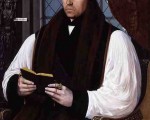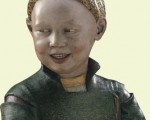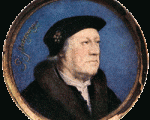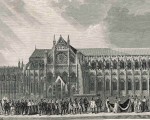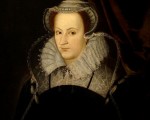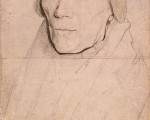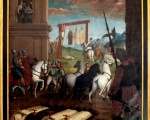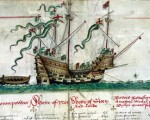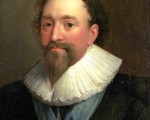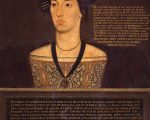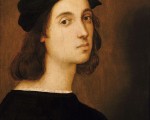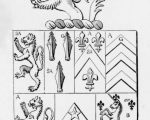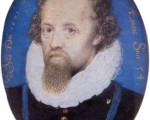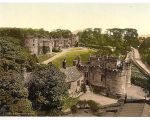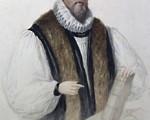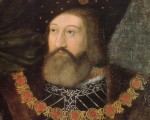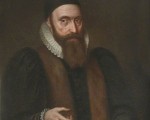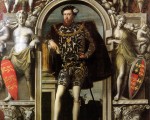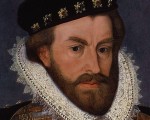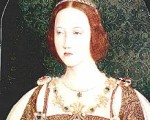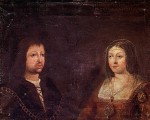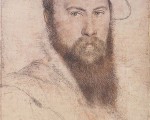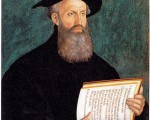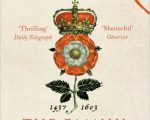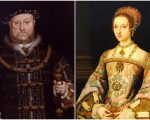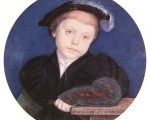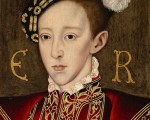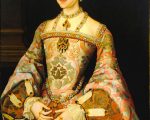21 May
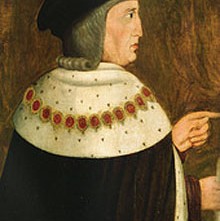
Thomas Howard, 2nd Duke of Norfolk
1508 – Death of Giles Daubenay, 1st Baron Daubeney, administrator, soldier, and diplomat. He was buried in St Paul's Chapel, Westminster Abbey.
1524 – Death of Thomas Howard, 2nd Duke of Norfolk, courtier, magnate and soldier, and grandfather of Anne Boleyn and Catherine Howard. He was created Duke of Norfolk in 1514 as a reward for his part in the English victory at the Battle of Flodden.
1527 – Birth of Philip II of Spain, King of Spain and consort of Mary I, at Valladolid, Spain. He was the son of Charles V, Holy Roman Emperor, and Isabella of Portugal.
1535 – The arrest of William Tyndale, Bible translator and religious reformer, in Antwerp, after he was tricked into leaving the English House owned by Thomas Pontz. He was condemned as a heretic and strangled, then burned in October 1536.
1558 – Death of William Glyn, Bishop of Bangor, at Bangor. He was buried in Bangor Cathedral.
1580 – Death of Sir John Thynne, member of Parliament and builder of Longleat. He was buried at Longbridge Deverill, Wiltshire.
22 May
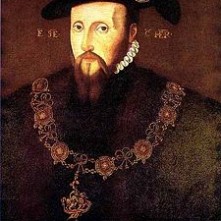
Edward Seymour, brother of Jane Seymour
1490 – Death of Edmund Grey, 1st Earl of Kent.
1537 – Edward Seymour, brother of Jane Seymour, was sworn in as a Privy Councillor.
1538 – The burning of John Forest, Franciscan friar and martyr, at Smithfield for heresy, for his allegiance to Rome.
1539 – Probable birthdate of Edward Seymour, 1st Earl of Hertford and son of Edward Seymour, Duke of Somerset (the Edward mentioned above). Hertford was also the husband of Katherine Grey, sister of Lady Jane Grey.
1570 – Death of John Best, Bishop of Carlisle. He was buried in Carlisle Cathedral.
23 May
1547 - Henry Grey, 3rd Marquis of Dorset (future Duke of Suffolk) and father of Lady Jane Grey, was installed as a Knight of the Garter.
1554 – The future Elizabeth I arrived at Woodstock, where she was put under house arrest. She had been released from the Tower of London on 19th May after being examined regarding Wyatt's Rebellion.
1572 – Burial of John Carré, entrepreneur and glass manufacturer, at Alford parish church. According to his biographer, Andrew Spicer, Carré "is credited with the re-establishment of window glass production in England and for introducing the manufacture of cristallo tableware".
1576 – Burial of Francis Barnham, alderman and draper, and husband of Alice Barnham, silkwoman and benefactor, at St Clement Eastcheap.
1591 – Death of John Blitheman, composer of organ and vocal sacred music, and tutor of John Bull. He was buried at the parish church of St Nicholas Olave, London.
24 May
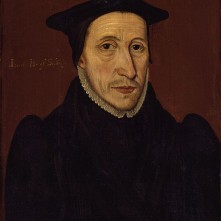
John Jewel
1522 – Birth of John Jewel, Bishop of Salisbury and Apologist of the Church of England, in Berrynarbor, North Devon.
1546 – Letters were sent from Privy Council to Anne Askew (future Protestant martyr) and her estranged husband Thomas Kyme, ordering them to appear in front of the council within fourteen days.
1562 - Chronicler Raphael Holinshed recorded that on this day in 1562, a monstrous child was born in Chichester, Sussex.
1576 – Birth of Elizabeth Chamberlain, Lady Chamberlain, daughter of Sir George Carey, 2nd Baron Hunsdon (grandson of Mary Boleyn), and Elizabeth Spencer. Elizabeth I was Elizabeth's godmother.
1612 – Death of Robert Cecil, 1st Earl of Salisbury, politician, courtier and Elizabeth I's Secretary of State, at Marlborough, Wiltshire. Cecil was the only surviving son of William Cecil, 1st Baron Burghley.
1616 – Death of Margaret Clifford, Countess of Cumberland, at Brougham Castle, Westmorland. She was buried in Appleby Church.
25 May
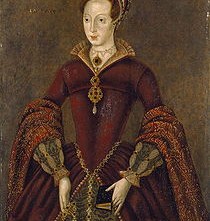
Lady Jane Grey
1524 – Death of Sir Thomas Lovell, administrator and Speaker of the House of Commons, at Elsings in Enfield.
1537 – Hanging of John Pickering, Dominican friar, at Tyburn. Pickering had been found guilty of treason for his part in the Pilgrimage of Grace uprising.
1551 – Croydon (London) and its neighbouring villages experienced a shock from an earthquake.
1553 - A triple wedding took place at Durham House, the London residence of John Dudley, Duke of Northumberland. Lady Jane Grey married Guildford Dudley, one of the Duke’s sons, her sister Lady Katherine Grey married Lord Henry Herbert, son of the Earl of Pembroke, and Guildford’s sister, twelve year-old Lady Catherine Dudley, married Lord Henry Hastings. Click here for more information.
1554 – Edward Courtenay, Earl of Devon, was moved from the Tower of London to Fotheringhay Castle. He had been implicated in Wyatt’s Rebellion.
1607 – Funeral of John Rainolds (Reynolds), theologian and President of Corpus Christi College, Oxford. He was buried in the college chapel.
1625 – Death of William Barlow, philosopher and Church of England clergyman. He was buried in the chancel of Easton church, the church where he was rector.
1632 – Death of William Knollys, 1st Earl of Banbury and courtier. He was the son of Sir Francis Knollys and Catherine Carey, and grandson of Mary Boleyn. He was buried at Rotherfield Greys.
26 May
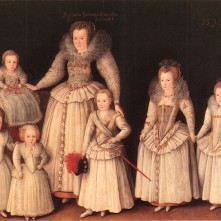
Barbara Sidney, Countess of Leicester
1520 – Meeting of Henry VIII and Charles V at Dover Castle. Click here to read more.
1536 - The Lady Mary, daughter of Henry VIII, wrote to Thomas Cromwell asking him to intercede with her father on her behalf, now that Anne Boleyn was gone. Click here to read more about the letter.
1537 – Executions of Adam Sedbergh, Cistercian monk and Abbot of Jervaulx, and William Wood, Prior of Bridlington, at Tyburn. They were condemned for treason following the Pilgrimage of Grace.
1538 – Death of Sir Anthony Fitzherbert, Judge and legal writer. He was buried at Norbury, Derbyshire. He is one of the best-known English legal writers of the sixteenth century.
1583 – Death of Esmé Stuart, 1st Duke of Lennox, only child of John Stuart, fifth Seigneur d'Aubigny, and his wife, Anne de La Queulle.
1596 – Burial of Thomas Bickley, Bishop of Chichester, in Chichester Cathedral.
1604 – Death of Godfrey Goldsborough, Bishop of Gloucester. He was buried in the Cathedral.
1621 – Burial of Barbara Sidney (née Gamage), Countess of Leicester, at Penshurst.
1623 – Death of Francis Anthony, alchemist and physician. He was buried in the church of St Bartholomew-the-Great.
27 May
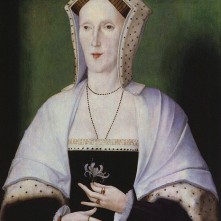
Margaret Pole
1492 – Birth of Sir Antonio Guidotti, merchant and diplomat, in Florence, Italy. Guidotti brought together England and France in 1549–50 in negotiations for peace and the restoration of Boulogne to France. His rewards from Edward VI included a knighthood.
1536 – Cardinal Reginald Pole sent Henry VIII a copy of De Unitate (Pro Ecclesiasticae Unitatis Defensione). In it, he criticised the King's divorce and the trouble it had caused.
1537 – Chronicler Edward Hall recorded that "there was a Te Deum sung in St Paul's cathedral for joy at the queen's [Jane Seymour] quickening of her child". Click here to read more about this.
1541 – Execution of Margaret Pole, suo jure (in her own right) Countess of Salisbury. It is recorded that she was beheaded by "a wretched and blundering youth … who literally hacked her head and shoulders to pieces in the most pitiful manner". She was buried in the Chapel of St Peter ad Vincula. Click here to read more about Margaret and her execution.
1560 – Burial of Thomas Wendy, royal physician, at Haslingfield, Cambridgeshire.
1601 – Death of Robert Beale, administrator and diplomat, at his home, Barn Elms, Surrey. He served Elizabeth I as a clerk of the Privy Council and as a special ambassador. He was buried in All Hallows, London Wall.
1614 – Death of Peter Turner, physician and MP, in London. He had attended Sir Walter Ralegh in the Tower of London.
